Hawks in South Carolina
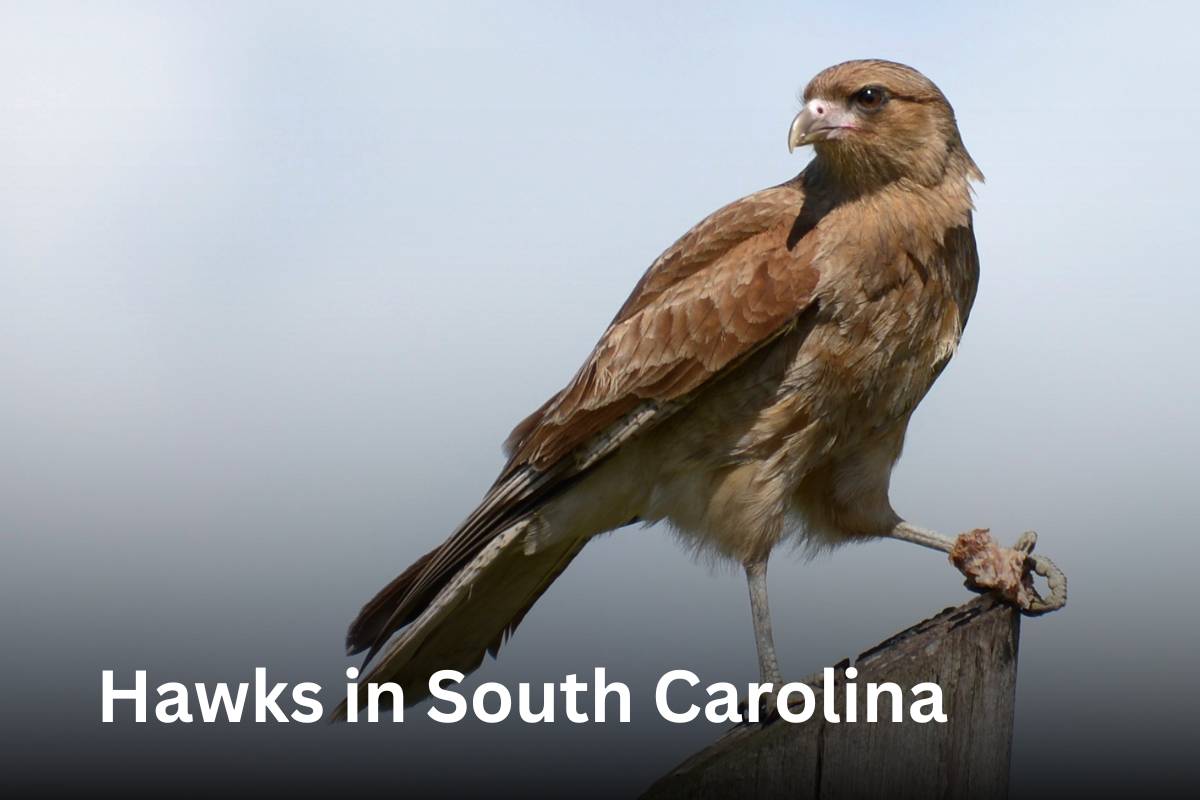
South Carolina, a state rich in natural beauty and biodiversity, is home to a variety of fascinating bird species, including several types of hawks.
These majestic birds of prey are known for their keen eyesight, powerful talons, and impressive hunting skills.
In this article, we delve into the world of these majestic birds of prey, exploring their habitats, appearances, and their diets. So go till the end.
List of hawks in South Carolina:
- Sharp-shinned hawk
- Cooper’s hawk
- Red-shouldered hawk
- Broad-winged hawk
- Red-tailed hawk
- Northern harrier
1. Sharp-shinned hawk (Accipiter striatus)
The sharp-shinned hawk also known as the northern sharp-shinned hawk or sharpie, is a small bird of prey native to the Americas.
The males of this bird are the smallest hawks in the United States and Canada. The sharp-shinned hawk has a long rectangular tail and rounded wings.
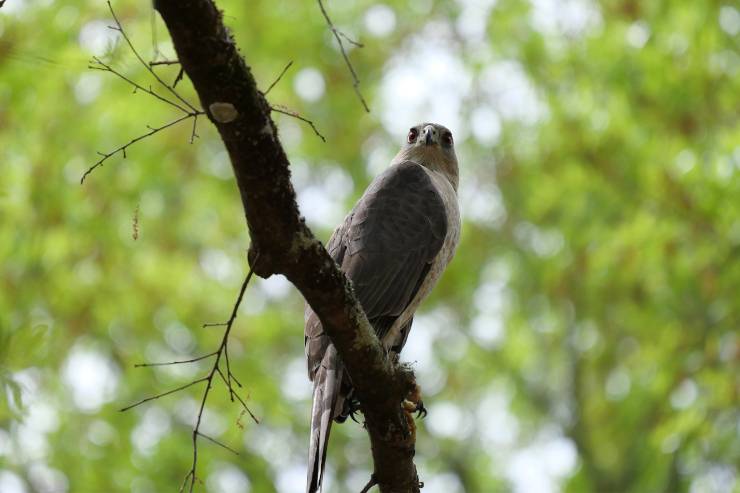
Likewise, males have blue-gray upperparts, orange barring on their underparts, and dark bands on their tails. Whereas females are larger than males and young birds are dark brown above with thick brown streaks on plate underparts.
Size and wingspan of Sharp-shinned hawk:
- Size: 24-34 cm (9.4-13.4 inches)
- Weight: 87-218 g (3.1-7.7 oz)
- Wingspan: 43-56 cm (16.9-22.1 inches)
- Life span: 5 years
Habitats: This species lives in wooded habitats in Alaska, much of Canada, the USA, Mexico, parts of Central America, the Caribbean, and parts of South America.
Also, they are common hawks in South Carolina. The large populations are thought to occur in the temperate boreal forests, but winter in warmer regions farther south. It can also be found in shrublands, thickets, and near suburban and agricultural areas.
Feeding: The sharp-shinned hawks prey on small birds, especially various songbirds such as wood-warbles, sparrows, finches, wrens, nuthatches, thrushes, and icterids.
Occasionally, they will also eat lizards, rodents, frogs, large insects, snakes, and rarely bats.
2. Cooper’s hawk (Accipiter cooperii)
The cooper’s hawk is a medium-sized hawk native to the North American continent. The bird was named in 1828 by Charles Lucien Bonaparte in honor of his friend and fellow ornithologist, William Cooper.
This species has hooked bills that are well adapted for tearing the flesh of prey, as is typical of raptorial birds.
As males, they are a solid blue-gray color above and have a well-defined crown made of blackish-brown feathers above a paler nape and hindneck offset against their streaked rufous cheeks.

Whereas, adult females may average slightly more brownish or grayish above, although some adult males can range into almost a powder blue color.
Size and wingspan of Cooper’s hawk:
- Size: 37-39 cm (14.6-15.3 inches)
- Weight: 220-410g (7.8-14.5 oz)
- Wingspan: 62-90 cm (24.4-35.4 inches)
- Life span: 12 years
Habitat: It is commonly found in South Carolina in woods or on the edge of fields. It is also found from Southern Canada to Northern Mexico.
The cooper’s hawks prefer to breed in open woodlands, including small woodlots, riparian woodlands in dry country, farmlands, pinyon woodlands, and floodplains.
Feeding: These birds are carnivores. Their diet mostly consists of small or medium-sized birds, but also small mammals and, in more arid vicinities, lizards. They may sometimes eat frogs, fish, and insects.
3. Red-shouldered hawk (Buteo lineatus)
The red-shouldered hawk, scientifically known as Buteo lineatus, is a medium-sized buteo. In the early 1900s, this species was the most common Buteo in New England.
Likewise, adult red-shouldered hawks are colorful hawks, with dark-and-white checkered wings and warm reddish barring on the breast.
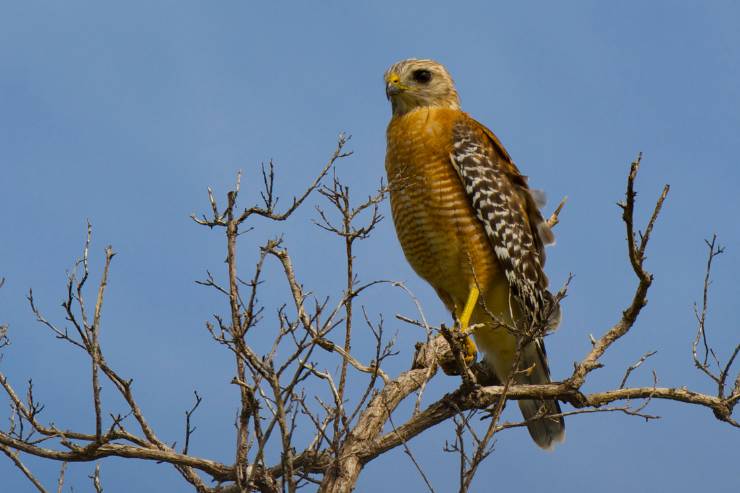
The tail is black with narrow white bands. Immature are brown above and white below streaked with brown. All ages show narrow, pale crescents near the wingtips in flight.
Size and wingspan of Red-shouldered hawk:
- Size of males: 38-58 cm (15–23 inches)
- Size of females: 47-61 cm (19–24 inches)
- Weight of males: 550g (1.21 lb)
- Weight of females: 700 g (1.5 lb)
- Wingspan: 90-127 cm (35–50 inches)
- Life span: Up to 12 years
Habitat: This species is a year-round resident to all of South Carolina, and most of the eastern half of the US. It breeds in eastern North America and along the coast of California and northern to northeastern-central Mexico.
The red-shouldered hawks are forest raptors. It tends to prefer large, mature, contiguous, mixed deciduous coniferous forests with open understories.
Feeding: It eats mainly small mammals, other birds, reptiles and amphibians.
The red-shouldered hawks will commonly re-use the same nest year after year. The biggest threat to these birds is the clearing of wooded areas where they nest and breed.
4. Broad-winged hawk (Buteo platypterus)
Broad-winged hawk is a medium-sized bird of prey that belongs to the genus Buteo. Also, it has six recognized subspecies and each is named for its distribution.
The broad-winged hawk adult has reddish horizontal barring underneath, whereas the immature birds barring run vertically and are browner.
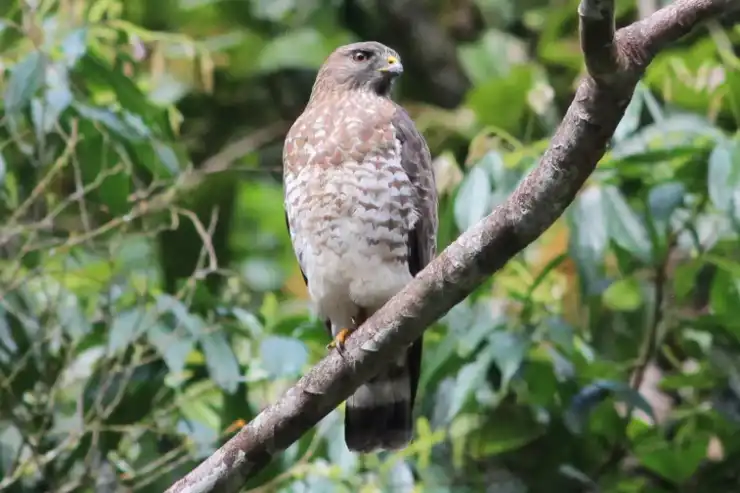
Additionally, the tail of the adult is brown to gray with broad white stripes, and the immature bird tail is brown with a light-back terminal band. Therefore, in all ages, the sexes look alike.
Size and wingspan of Broad-winged hawk:
- Size: 32-44 cm (13–17 inches)
- Weight: 265–560 g (9.3-19.8 oz)
- Wingspan: 74-100 cm (29–39 inches)
- Life span: 12 years
Habitat: The broad-winged hawk found in the interior forests of South Carolina. They can be seen at hawk watches during the spring and fall migrations.
Also, they have a wide range in North America and South America, from southern Canada to southern Brazil.
This species breeds in the northern and eastern parts of North America, and some migrate in the winter to Florida, southern Mexico, and northern South America.
Feeding: These birds are also carnivores and their diet depends on the time of year. In the summer or nestling season, it eats small mammals, including chipmunks, voles, shrews, frogs, and occasionally even other nesting birds.
During winter, it feeds on insects, frogs, snakes, crabs, and some small mammals.
5. Red-tailed hawk (Buteo jamaicensis)
Red-tailed hawk is a bird of prey that breeds throughout most of North America. Also, it is one of the most common members of the genus of Buteo in North America and worldwide.
The red-tailed hawk, especially those in the west, has a very variable plumage, including reddish-brown and dark phases. Its wings are long and broad and their tails are short and wide.
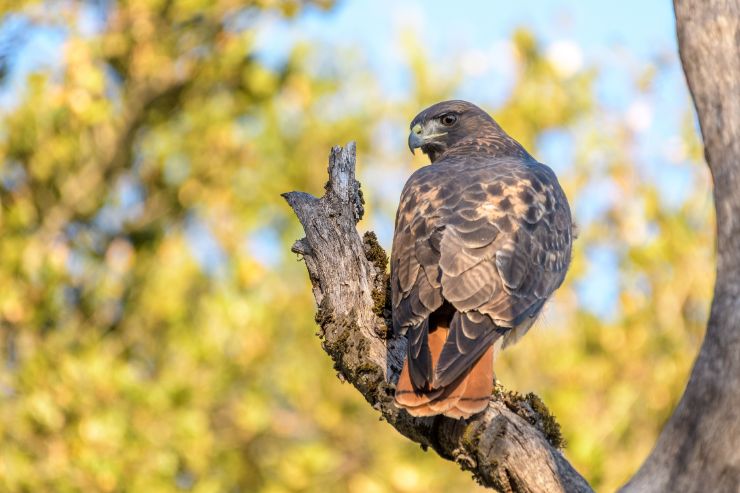
Likewise, most have light-colored breasts with dark streaks, making a mottled “belly band” and also have dark brown heads. On most adults, the upper side of their tail is deep rufous.
Lighter birds frequently feature a faint white “V” as part of their back feathers, as seen when they are perching. However, juveniles do not have a red tail.
Size and wingspan of Red-tailed hawk:
- Size: 45-65 cm (18–26 inches)
- Weight: 690-1600g(1.5-3.5lb)
- Wingspan: 110-141 cm(3 feet 7 inches-4 feet8 inches)
- Life span:10-15 years
This bird displays sexual dimorphism in size, with females averaging about 25% heavier than males.
Habitat: The red-tailed hawks are the most common hawks, with around two million nestling hawks in North America. This figure represents approximately 90% of the red-tailed hawk population globally.
These large hawks live in South Carolina and most of North America all year long. Also, it occupies a vast range of habitats within a wide range of altitudes, including scrub deserts, montane grasslands, agricultural fields, coniferous woodlands, urban parks, and coastal regions.
Feeding: Its diet varies with the location and the season. They mostly eat small mammals including rats, voles, squirrels and rabbits, birds, and reptiles, especially snakes, frogs, and insects. They may also feed on carrion.
6. Northern harrier (Circus hudsonius)
The northern harrier also recognized as the marsh hawk or ring-tailed hawk, is a medium-sized raptor. Formerly, it was considered to be a subspecies of the Eurasian hen harrier.
They have the longest wing and tail relative to the body size of any raptor occurring in North America. The sexes of this bird are different in terms of appearance and weight, with females being heavier.
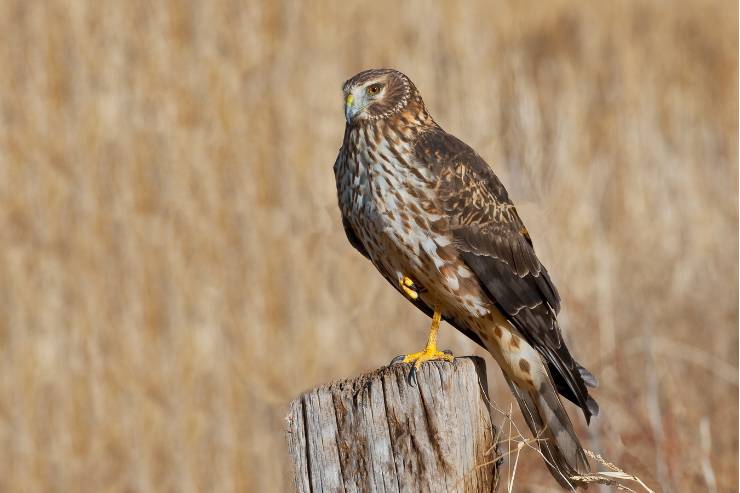
Furthermore, the male plumage is darker grey than that of the female harrier, and the female is also darker and more rufous. The male is sometimes nicknamed the “Grey Ghost”, because of his striking plumage and spectral aura.
Size and wingspan of Northern harrier:
- Size: 41-52 cm (16–20 inches)
- Weight of male: 290-400g(10-14oz)
- Weight of female: 390-750g (14-26oz)
- Wingspan: 97-122 cm (38–48 inches)
- Life span: Up to 12 years
Habitat: It is the only harrier variety of hawks indigenous to North America. Their breeding grounds range as far north as Canada but in winter in more southern climates, including South Carolina.
The northern harrier likes living and hunting in fields and marshes.
Feeding: It primarily hunts small mammals, such as voles, cotton rats, and ground squirrels. Up to 95% of the diet comprises small mammals, while, they also regularly hunt birds such as larks, pipits, small shorebirds, and the young of waterfowl and galliforms.
They may occasionally supplement their diet with amphibians, especially frogs, and even bats if these are available.
Conclusion
South Carolina skies are graced by a remarkable array of hawks, each contributing uniquely to the states ecological tapestry.
From the broad-winged first canopies to the Northern Harrier marshland daces, these birds demonstrate nature’s intricate balance.
Whether you’re a bird enthusiast or a resident of the state, learning about these hawks can provide a deeper appreciation for South Carolina’s diverse wildlife.
So, the next time you are out in nature, keep an eye out for these magnificent creatures soaring in the sky above. You never know when you might spot one of the South Carolina resident hawks.






